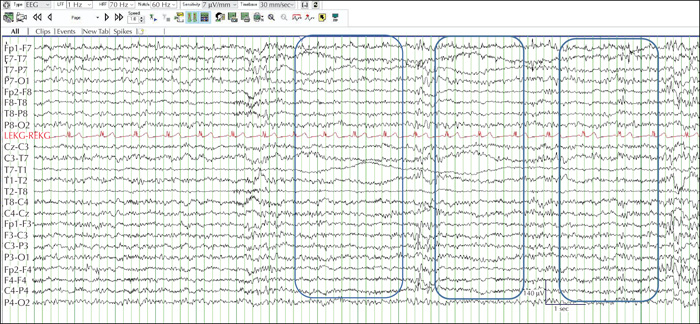Epileptic Disorders
MENUTelevision-induced electronegative photoparoxysmal response: an extratemporal seizure mimic? Volume 23, numéro 1, February 2021
- Mots-clés : video-EEG, photic stimulation, television-induced electronegative photoparoxysmal response, extratemporal seizure
- DOI : 10.1684/epd.2021.1239
- Page(s) : 161-6
- Année de parution : 2021
Video-EEG monitoring is an established gold-standard procedure for diagnosis and differentiation of epileptic and non-epileptic seizures. Epilepsy misdiagnosis, to which factors such as EEG artifact misinterpretation contribute to, is common, and can have long-lasting iatrogenic repercussions to the clinical management of affected patients. Among the many types of responses to photic stimulation, artifacts and physiologic and epileptic responses are possible. All of these can interfere with EEG interpretation when provoked by a source of illumination. Photic-induced responses are of increasing relevance given the ubiquity of screens and other light-emitting electronics in our modern world. One of these, the photoparoxysmal response, is a frequent finding in photosensitive patients with genetic generalized epilepsies. Various responses beyond abnormal occurrence of cortical spikes or spike-and-wave discharges are known to occur on EEG in response to intermittent photic stimulation (IPS), with different clinical implications. To our knowledge, we report a unique electronegative photoparoxysmal response during video-EEG monitoring induced by fluctuating illumination caused by a distant television screen. This response mimicked an extratemporal seizure in a young woman with frontal lobe epilepsy, admitted for presurgical evaluation. Novel electronegative responses to electronic devices during video-EEG monitoring merit consideration by EEG interpreters to help avoid misdiagnosis.


